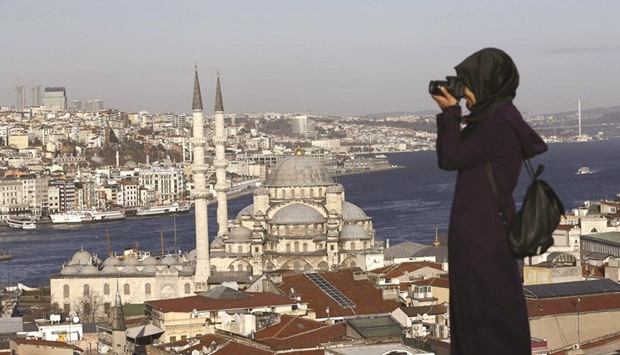Turkey’s capital inflows of unknown origin last year reached the highest level since the central bank began keeping records in 1975, spurring fears that the government’s way of financing the current-account gap is unsustainable.
The central bank reported on Thursday that “net errors and omissions” rose to $9.7bn. One possible cause is the difference between actual tourism revenue and the amount estimated by the bank, which relies on surveys of foreign visitors. Another, put forward by former Customs Minister Nurettin Canikli, is that regional chaos is creating a financial “safe haven” in Turkey.
The rise in mystery inflows casts doubt over the government’s achievement in narrowing the current-account deficit, considered the economy’s biggest vulnerability in 2013. An improvement in the foreign trade imbalance was key, but as the gap narrowed, financing from mystery funds rose. Combined with foreign reserves sold, they were equivalent to 67% of the deficit last year - the highest level since Turkey’s last surplus in 2001.
“It is impossible to see this as a healthy way of financing the deficit,” Finansbank chief economist Inan Demirsaid by phone. “The size of the net errors and omissions shows the difficulty Turkey is facing while it finances the gap in its current-account, even as it shrinks.”
Turkey’s current-account gap narrowed at a slower pace in December than in the previous two months as the impact of lower oil prices diminished at the end of last year. The deficit shrank 24% to $5.07bn, from $6.66bn a year earlier. The median estimate in a Bloomberg survey was for a $5bn shortfall.
The gap had narrowed at an annual rate of about 59% and 84% in November and October, respectively, the central bank said Thursday.
Mystery flows are called net errors because the central bank can’t tell where exactly the money came from and how it entered the country.
A potential reason for the increase could be non-financial companies’ inability to pay back foreign-exchange debt, due to the lira’s slump or for other reasons, which forced them to repatriate assets through unofficial channels, Demir said.
There’s a close link between the amount of money Turks bring in from abroad and the amount of mystery flows, according to Murat Ucer, an Istanbul-based economist at Global Source Partners Inc. When the former dries up, the latter surges, he said, citing official data he compiled going back to 2007.
Trade with Iran has also been suggested. A long-time gold importer, Turkey became an exporter in 2012 when it started paying for Iranian gas in precious metals as a way of circumventing international sanctions that have now been lifted.
Regardless of source, a key concern about unexplained inflows is what it says about how Turkey finances its current account, Maya Senussi, a senior economist at Roubini Global Economics LLC in London, said by e-mail.
“It underscores the fragility of the deficit-financing,” Senussi said. “It is unpredictable and unsustainable, and it is fairly safe to assume it is not meant to be long-term investment.”

A tourist takes photographs in front of the New Mosque by the Bosphorus strait in Istanbul. The central bank reported on Thursday that u201cnet errors and omissionsu201d rose to $9.7bn. One possible cause is the difference between actual tourism revenue and the amount estimated by the bank, which relies on surveys of foreign visitors.


